|
|
|
|
|
|
|
 |
|
|
|
A study of MULTICOLOR TOURMALINE
|
|
|
|
|
|
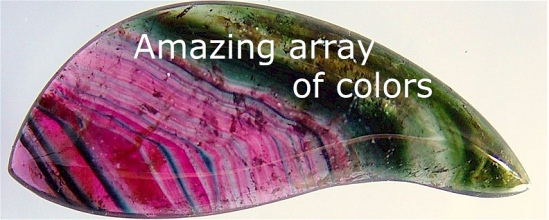 |
|
|
|
Discover:
The Ribboned Tourmaline !
|
|
|
|
|
|
|
|
|
|
Tourmaline, mixed crystals of aluminium boron silicate with a |
|
|
|
|
complex and changing composition, shows a variety of colors |
|
|
|
|
and designs may be unique in gemstones. |
|
|
|
|
|
|
|
|
|
|
|
|
|
|
|
 |
|
|
|
|
|
|
|
|
|
|
|
The mine of Alakamisy Itenina in the highlands of Madagascar, |
|
|
|
|
was discovered in 1989 in a rice plantation. |
|
|
|
|
The tourmaline deposit is alluvial and the shape of the stones |
|
|
|
|
remains rolled. |
|
|
|
|
|
|
|
|
|
This occurrence is hand worked and the stones are at a depth |
|
|
|
|
ranging from a few meters up to twelve meters. |
|
|
|
|
|
|
|
|
|
|
|
|
|
|
|
|
|
|
|
|
|
|
|
|
|
|
|
|
|
|
|
|
|
© Image J. Darbellay |
|
|
|
|
|
|
|
|
|
|
|
Atomic Bonding.
In minerals, atoms bind together to form molecules through their orbital of higher energy, i.e. that only the outer layers of electrons involved. They are the ones who also, by electromagnetic excitation, will be responsible for the color. The links can be of four types: covalent, ionic, metallic, and of Van der Waals.
|
 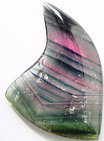 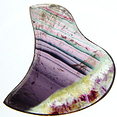 |
|
|
|
|
|
|
|
|

Sawing a large block of tourmaline in Madagascar, using a diamond blade.
The metal disk must be continuously humidified by a jet of water in order to lower its temperature.
|
|
Tourmalines have a complex structure featuring various |
|
|
|
polyhedral environments for cations and which allow many |
|
|
|
substitutions for elements as common as iron, titanium, |
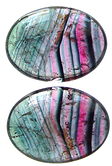
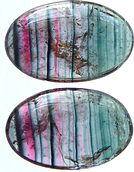
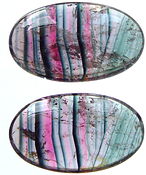
Growth zoning in a tourmaline from Alakamishy Itenina.
|
|
|
manganese, magnesium, lithium, chromium, etc.. under their |
|
| valences. |
|
|
The tourmalines group represents a privileged field of |
|
|
investigation. By themselves, the aforementioned metals, |
|
|
commonplace in the earth's crust, can account for all the |
|
|
colors observed. |
|
|
|
|
|
|
|
|
|
| We will keep this very telling example about the pink color |
|
| which involved both a electronic colorful center and a color free |
|
| center. The work by K. Nassau on a large number of specimens |
|
| treated by irradiation and heating indicates the existence of at |
|
| least seven different pinks. I.e. at the place where our eye can |
|
| only see a pink shade, measuring devices detect seven distinct |
|
| causes. |
|
|
|
|
|
|
|
|
|
|
|
|
|
|
|
|
|
|
|
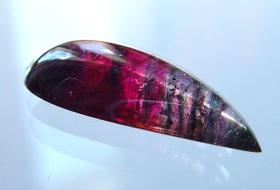 |
|
|
|
|
|
|
|
|
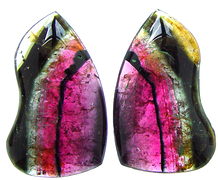 |
|
|
| The thickness of a ribboned polychrome |
|
|
| tourmaline cabochon usually reaches 3.5 to |
|
|
| 5.5 mm. depending on the size of the stone. |
|
|
|
|
|
|
|
|
|
| |
|
| Wavelength: |
|
|
|
Physics knows wavelength of radiation only, the notion of color is completely |
|
|
foreign to it. That's why it is so helpful to us in the interpretation of color in |
|
|
minerals. A spectrograph that only identifies the position of spectral lines will |
|
|
perfectly make the difference between a radiation at 0.530 microns and an another |
|
|
at 0.532 microns, where our eyes will only receive the same green. |
|
|
|
|
|
|
|
|
|